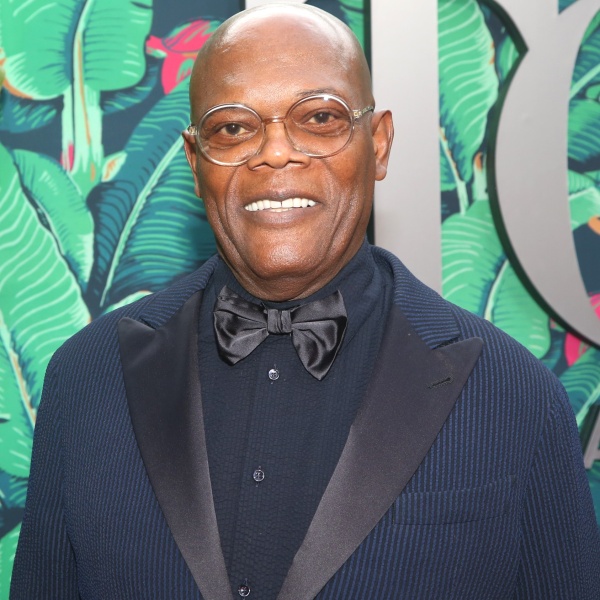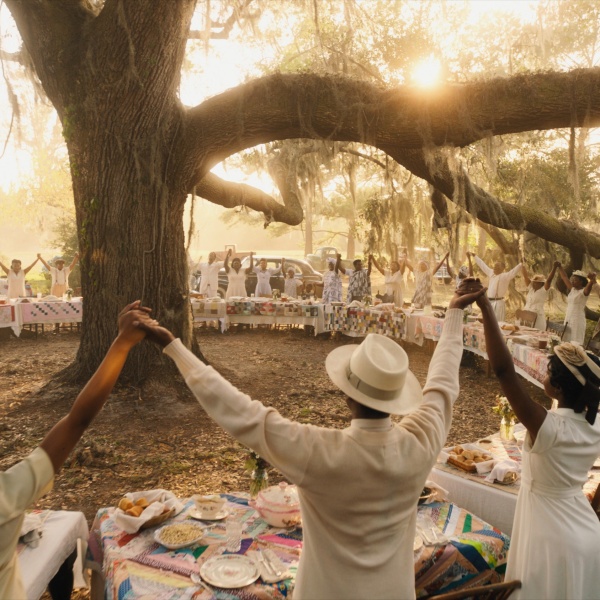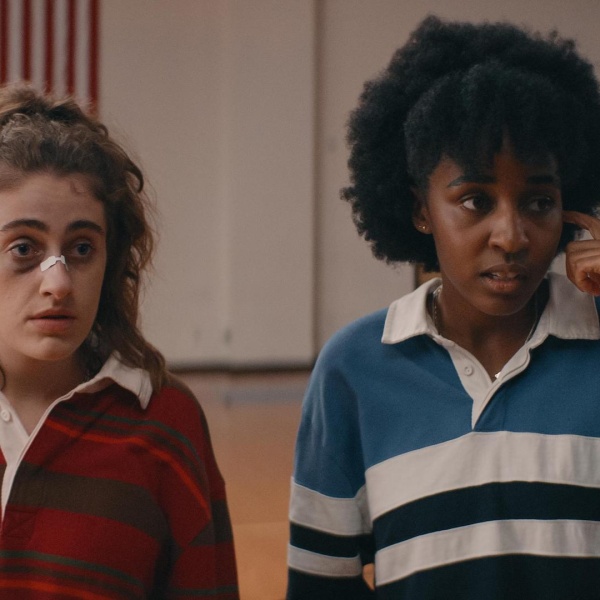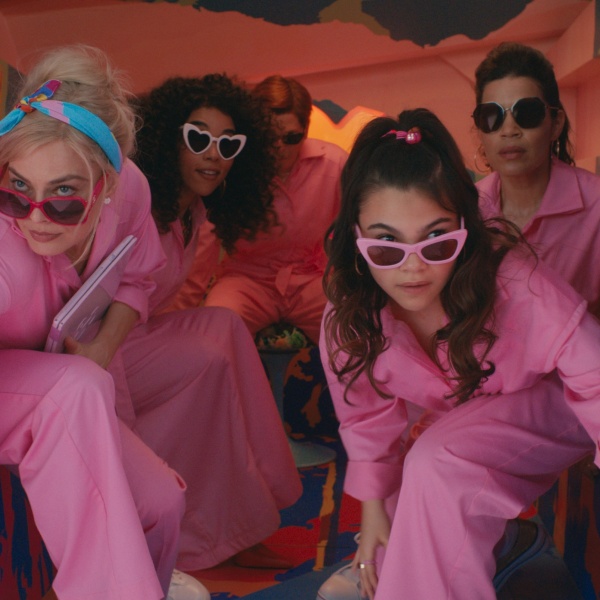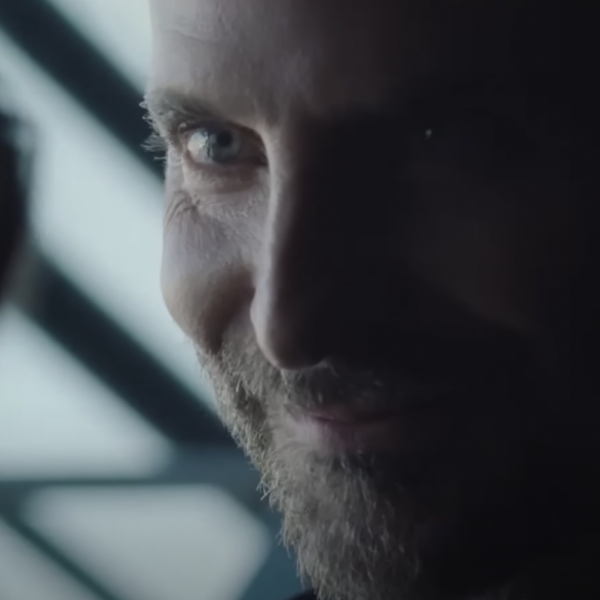John Waters is no longer a cult filmmaker. The filmmaker, author, artist, actor, and spoken-word performer has been a member of the Academy of Motion Picture Arts and Sciences since 1990 (David Lynch was his sponsor). He’s screened “Hairspray” in the museum’s theater (with a Q&A moderated by Oscar-winner Barry Jenkins). The Academy Film Archive preserved his PSA, “John Waters Doesn’t Want You to Smoke.” He’s even getting a star on the Hollywood Walk of Fame. As Waters likes to note, he’s so respectable he could puke.
At this point, everyone loves John Waters. John Waters should be hosting the Oscars, an idea so commonly held that if you ask the upbeat and unerringly polite Academy CEO Bill Kramer the odds of making that happen, you can hear him doing his best not to roll his eyes. “If I had a dime for every time that question’s been asked,” he said.
However, neither the Academy nor Waters has ever experienced something like this. While the filmmaker has toured both his own work as a fine artist (“John Waters: Change of Life”) and his personal and extensive art collection (“Coming Attractions: The John Waters Collection”), the Academy Museum‘s “John Waters: Pope of Trash” is the first large-scale exhibition solely devoted to his incredible cinematic canon.
From September 17, 2023, through August 4, 2024, “John Waters: Pope of Trash” dedicates 12 galleries to a delightful and unfiltered examination of Waters’ life and work, hosts screenings of 12 of his films (including the little-seen “Eat Your Makeup” on September 17, with Waters providing live commentary), and a 250-page hardcover catalog that includes essays by Waters, revered Wesleyan University film professor Jeanine Basinger, “The Wire” creator David Simon, and Waters interviews conducted by Ricki Lake, Kathleen Turner, Iggy Pop, Sean Baker, and more.
Nearly four years in the making, the exhibit demanded a snipe hunt to find what would become 400 objects to sum up more than a half-century of his work. Overseen by exhibitions curator Jenny He and associate curator Dara Jaffe, it includes a flyer for Waters’ early puppet shows, Divine’s baby shoes preserved in bronze (and his birth certificate as Harris Glenn Milstead), Mink Stole’s cat-eye rhinestone eyeglasses from “Pink Flamingos,” the $16 receipt for the “Female Trouble” scene clipped by Maryland censors, and clips from Waters’ appearances in TV and movies including “Homicide: Life on the Street,” “Seed of Chucky,” “Sweet and Lowdown,” and “The Simpsons.”
“Something that unlocked something really major for us was when we first showed John the space where the exhibition would be,” Jaffe said. “At that time, it was our Miyazaki exhibition. And when we first walked into the entrance of that show, John said, ‘When this is my exhibition, they’ve got to walk into a huge shock here. They’ve got to open that door and be greeted with such a shock.’ And he said, ‘We can’t really electrically shock them, can we?’ And the answer is, no, we cannot.”

Instead, the exhibit places visitors inside a church with his early Dreamland stars like Divine, Edith Massey, and David Lochary rendered in stained glass, Waters represented as a beatific and smirking priest, and shocking highlights from films like “Pink Flamingos,” “Polyester,” and “Desperate Living” projected on the pulpit. Sit in the pews, and you might be buzzed by the same gimmick that thrilled 1959 audiences who watched “The Tingler,” directed by Waters’ hero William Castle.
However, some of the exhibit’s most memorable highlights come from seeing words on the page. In a post-production thank-you letter, “Hairspray” star Ricki Lake writes: “I will never ever forget for the first time in my life, my peers treated me as an adult. A mature woman who discussed with other fellow adults ‘grown-up’ words — felching, plate jobs, snowballing, to name a few,” and closes with “PS: Thanks for hugging me when I needed one (always!)” There are also handwritten first drafts of scripts for “Pink Flamingos” and “Desperate Living,” all on yellow legal pads in Waters’ tidy cursive.
I spoke to Waters over the phone a week before its September 14 press preview. He’d yet to see the the exhibit; he first had to fly to Kent, Connecticut for his annual adult sleepaway Camp John Waters (tagline: “Notall cults are bad”).
The following interview has been edited and condensed for clarity.
IndieWire: Thank you so much for taking the time to talk to IndieWire.
John Waters: I read IndieWire every day.
We appreciate that! Back in ‘82, you described “Polyester” as “an initial effort to spread my germs to suburbia.” With the Academy show, do you feel like that campaign is now complete?
My germs became my jewels. That’s what the Academy pontificated. If I’m the Pope of Trash, what are they? They’re the, I don’t know, the Holy Mother of God. They certainly understood something that I was never sure of when I was young. When I made Hollywood movies, people said, “Did you ever think you’d make a Hollywood movie?” Well, I never thought I wouldn’t. I mean, it wasn’t what I was thinking about when I made “Hag in a Black Leather Jacket.” But as I went along, I always was interested.
The only thing I could ever do in the beginning, when you have $50, is make an underground movie. I’ve made every kind of movie from the lowest underground to a $13 million movie, “Serial Mom,” which today would be, I don’t know, $20 million at least. And each one was hard. Never was it easier. People say, did you have fun making those movies? No! I had fun when they were a success or at dinner afterward. I had fun when I got a check that it finally had broken even. But they were hard. They were 20-hour days. I have great memories of them. I have pride in making them, but I wouldn’t say fun. I mean, we got along and I have great memories, but fun is la, la, la, la, let’s have another drink. Even in my most depraved movies, we weren’t taking drugs when we made them. I smoked pot when I wrote them, which I could never do now. I’d be paranoid of the paper. I’d just start worrying the pen was going to bleed on me or something. That’s the difference from the first movie to the last. I could not imagine smoking pot and writing today.
In the Academy show catalog, you declare, “I am going to overdose on respectability and that is a new high.”
Oh it is, certainly! I stand by that. I might just pass out the opening night at the Academy show. I might just finally collapse from respectability, like a puddle. Like people had the vapors, old queens had the vapors. Well, I’ll just get a new one of respectability rot that just makes me collapse.
What does that feel like, and how does it compare to the transgressive high of filth?
I think in some ways it’s the same. It’s just at a different level and a different time in my life. I’m not a radical 16-year-old trying to make a movie. But at the same time, I’m a 77-year-old Geritol gentleman who is being celebrated for all the things I did in my life. So that is respectability with roots in filth, which is kind of maybe new.
You’ll start a trend.
I don’t think anybody’s tried to imitate me, really.
No, I don’t think so either.
That’s because they don’t want to be, not because they can’t, I’m not saying that. I’m just saying people think, “Well, that’s all right for him. I’m going to leave that one alone.”
Yeah, I don’t know. When I told people I was talking to you they were all like, “Oh, I love John Waters.”
I know, people come over. Well, the most shocking thing now is people say to me, “My parents gave me your movies.” I thought, “They did?!” When I was young, they called the police when they found them. Cookie Muller’s mother found the script for “Pink Flamingos” when we were shooting, picked it up, and chased me across the lawn, screaming, “Beelzebub!”
Would you consider hosting the Oscars? Because that would be a real public service.
Oh, sure. But I don’t think they’re going to ask me to do that. But yes, and I’d be a good one, too. I could write a really good speech. I did a photo piece for a show called “Destroy All Screeners,” which was a picture of me in black tie, with all the [Academy] screeners, me lighting them on fire — doing exactly what they want you to do so people don’t get them. Remember when you got screeners and somebody would give ’em to somebody and they’d end up in the flea market, and then you’d go to Academy jail? Which I was for — don’t lend those screeners out — but they wanted you to destroy ’em. So I got in black tie and built a whole bonfire of them and destroyed them. It was my really being a good Academy member going beyond the call of safety for screeners.
You have an extensive personal art collection that you bequeathed to the Baltimore Museum of Art, and they did the show “Coming Attractions: The John Waters Collection” earlier this year. How did it feel to see your art collection presented that way?
It was great, except I live in three places so they all came from all my different apartments. It looked like I had been robbed. There were nails on the wall everywhere where things have been, but they’re all back now because they don’t really get ’em until I’m dead. But it felt great to see. I never bought them to make money. I never sold a piece. I sold one piece out of 600 only because of light restrictions, and there was nowhere I could hang it. I could have been an art advisor. I would’ve been a good one. That’s why I gave it to the museum. They have it forever in my hometown museum that first made me realize that contemporary art was a great way to make people crazy. It still does.
The Academy’s presentation includes a very rare screening of “Eat Your Makeup,” but with you providing live commentary.
Yeah, that’s because we can’t use the music. That’s one thing — when you’re young, pay your music rights. I never knew that. It’ll be good, because we can talk through it. I’ve never done that. I’ve never talked about it. Yeah, it’ll be a rare screening. I don’t think we’ll ever do this again, because “Eat Your Makeup” will never come out because of music rights issues.
Tell us what “Eat Your Makeup” is about.
It’s about a deranged governess and her lover who kidnap fashion models and force ’em to eat their makeup and model themselves to death. I always had a high concept. Mary Vivian Pearce, she’s one of the stars of the film, we used to show the films and book church basements. They never even saw the movie and when they did, it was over and it was too late. But we used to go out and she always looked like Jean Harlow, like she looked in “Mondo Trasho,” and she would hand people candy lipsticks and I’d hand them the flyer, and she’d say “Here. Eat it.” I’d say, “Read it and come.” And people would throw it down and say, “They put acid in it! Don’t eat it!” But we would go out and sell the movie that way.
It does have the full Kennedy assassination in it, with Divine as Jackie, which was pretty bold at the time. It really ended up looking like the Zapruder film, accidentally, just because I didn’t know what I was doing when I was filming it. But it has a certain power. It was appropriation before its time in some way, and only because we all loved Jackie Kennedy. We were obsessed. The whole country was. It was an image — of course, Andy Warhol did it. Many people did Jackie. I mean, there’s 50 movies. How many actresses have played Jackie Kennedy? Jacqueline, as she called herself, which I thought was better. My favorite thing is what she always said when she didn’t like something — “Ghastly.” That’s what we were.
“Eat Your Makeup” features Divine, but the real star is Maelcum Soul, who died two months after the film’s premiere. You’ve called her your most influential woman. What can you tell us about her?
Maelcum Soul was a very famous Beatnik woman who lived in Baltimore and worked in Martick’s, the first bar I ever went to. Morris Martick knew I wasn’t 21, but I stood in the alley and my mother would drop me off there saying, “Maybe you’ll meet people who would be like you here,” which was amazing she did that coming in from suburbia. It was a true Beatnik bar. And Malcolm was our Kiki of Montparnasse, and all the Beatnik artists painted her. She was beyond punk, way before anybody. She had dyed maroon hair. She wore full Divine makeup. I mean, Divine was scared of her. We were all scared of her. She was really a huge influence on me.
Do you feel like you still have muses?
Yes. Yes. Who’s a muse? Isabelle Huppert is my favorite actress in the world. I just could never figure out a way that she would live in Baltimore. Plotwise, it’s a stretch.
You’re also getting a star on the Walk of Fame the day after your show opens. Which is more exciting?
No, I’m not going to pick honors, but I love that it’s across from Larry Edmund’s Bookshop, right in front. It was because I’ve always loved that bookshop. It was the first place I went in Hollywood and it’s still there. All the great bookstores seem to be gone on Hollywood Boulevard, but that bookshop is still there, and it’s still the real thing and has great stuff. So I’m in really, really good geography, too.

The Dreamland stars who are gone — Divine, Maelcum, Cookie, Edith Massey, David Lochary. What do you think they would make of all this, the Academy show and the Hollywood Star?
They would be… making sure that they got money from the marketing — which their families do, by the way. [Laughs] Not all, but the ones that were in many, many of the movies, yes. They would be amazed, too. They would be. But who knows how people would’ve turned out? Because David Lochary died very, very young. And Divine, he was 42 or something when he died! Think about it. My friends’ children are older than that now. So Divine would be — are you kidding? He would be so proud. He always made an entrance, and he loved Hollywood. He lived in Santa Monica for a long time. And Edith Massey died in Venice where she had a thrift shop where she moved at the end. Her partner in that thrift shop is coming. It’s really going to be the ultimate Dreamland reunion, this opening.
Your exhibit “Change of Life” included a selection of your daily index cards.
I have one every day. I have one today. You’re on it.
[Laughing] What else is on the card?
Oh, I have to go upstairs. Hold on one minute.
Well, the first thing every day on my file card is, this one is day 7,554. That’s how long it’s been since I’ve had a cigarette. And I write that down every day because I never want to have one again. I had an interview at 11 to promote our spoken word show I’m doing in Nashville, 2:00 p.m. an interview, 2:30 you, 3:00 a tax meeting, 3 to 4:30 an Academy call about going over press releases. I got my laundry because tomorrow I go to John Waters summer camp for four days in Kent, Connecticut. A whole bunch of phone calls I have to return, and that’s pretty much it.
Has anybody ever tried to convert you to start using a phone instead?
No. I’m on my cell phone all day, on my computer, everything. It’s not like I’m a Luddite or anything. This is just easy. Just pull it out of your pocket. It’s the easiest way to organize your life. Just have a file card every day. When you go to sleep the next morning, you rewrite on it what you didn’t do, and you put it on your counter. It’s the easiest possible way. That’s what my company is called, File Card Inc.
Thank you so much for your time.
Sure, thank you. Hope you enjoy the exhibition.
Oh, I’m sure I will. I have no doubt.
We’ve got it all and we show it all!

